Resources
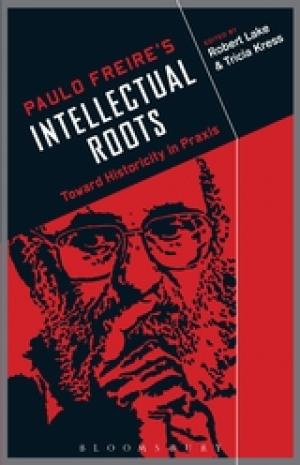
Best known for his Pedagogy of the Oppressed (New York, N.Y.: Herder, 1970), Paulo Freire (1921-1997) criticized a “banking model” of education − the deposit of knowledge possessed by the teacher into the vacant minds of students. Education should enable students to discover the knowledge they need to become free participants of their society, Freire argued, but the banking model reinforced subordination and acquiescence. Beginning in the 1950s in his native Brazil, before exile made him internationally important, Freire spent his career developing a vision of teaching as a dialogical encounter between teacher(s) and student(s): both have knowledge, and teachers cannot know what and how to teach their students for freedom unless they submit to be taught by the students, too. Freire reflected on this experience and vision at length in the first chapter of Pedagogy of Hope (New York, N.Y.: Continuum, 1993), and a nice feature of the present volume is the inclusion of that chapter as an epilogue. This volume corrects a distorted perception of Freire’s thought. Too often, Freire’s dialogic approach is taken in an anti-intellectualistic way to mean that the teacher has no particularly privileged knowledge to impart; consequently, the deep meaning of Freire’s pedagogy as a critical praxis by which students can appropriate the knowledge of privilege to liberate themselves is lost. This point is central to the introduction by Stanley Aronowitz, “Paulo Freire’s Pedagogy: Not Mainly a Teaching Method.” In addition, the prologue by Henry Giroux and the afterword by Peter McLaren provide orientation to the spirit and urgency of Freire’s work. McLaren puts well the necessity of a volume such as this by stating, “Without a careful reading of Freire’s intellectual roots, one can only witness the collision [between dreams of a better future and the supposed reality of the present situation] without understanding the systems of intelligibility that make such a collision inevitable and without understanding the possibilities of sublating such a collision in order to bring about alternative futures linked to the sustainability of the planet and humanity as a whole” (235-36). Thirteen writers contribute ten essays on thinkers, movements, and concepts crucial to Freire’s philosophy. They cover Hegel, Marx, Gramsci, Habermas, Buber, Fromm, Latin American liberation theology, praxis, conscientizaçao (“conscientization”), and oppression. With one serious exception, the authors manage to balance two important purposes: to introduce their subject in the subject’s own right for readers familiar with Freire but not with intellectual history, and to focus on illuminating in Freire’s work their subject’s influence. Some authors even carry out a valuable third task of criticizing and reconstructing Freire’s ideas so as to extend his thought. Especially noteworthy in this regard are Raymond Morrow in the Habermas chapter, and Sandy Grande, who, in the chapter on oppression, turns Freire’s idea to confront the dispossession of indigenous peoples. Although this is a useful volume, the significance of “historicity in praxis” could have been explicated more forthrightly to knit the entire collection together. Some unevenness means there is still room to improve on our appreciation of Freire’s thoughtworld. Still, this collection is an important contribution to scholarship and teaching practice.
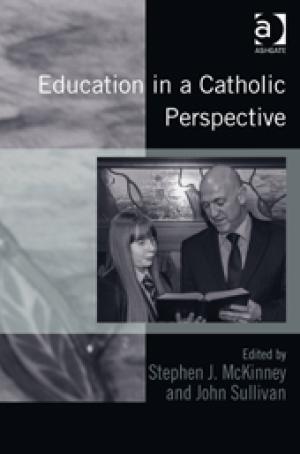
Higher education is in a state of flux amidst a cache of challenges that might be cast as a new set of unanticipated three R’s: recruitment, retention, and reserves. As college administrators strategize for the future, the shifting demographics in traditionally student-rich areas and the overall decreased pool of potential students because of birth rate trends will make sustaining college operations increasingly difficult. The challenge is more acute for private colleges and universities, whose sticker price tends to be substantially more than those of public institutions. It is perhaps even more poignant for Catholic institutions of higher learning that educate students in a particular religious environment. No two Catholic schools are the same and most wrestle with what it means to be Catholic. Some institutions boldly proclaim strong Catholic identity while others loosely reference their Catholic tradition or grounding. The number of students, faculty, and administrators on campuses self-identifying as Catholic complemented by the frequency of Catholic activities and choice of campus speakers have tended to serve as the metric for determining “how Catholic” an institution is. The first measure is reasonable. Without a critical mass of Catholic students, a Catholic school risks losing its identity. What precise percentage of Catholic students is needed for an institution to call itself Catholic, however, remains unsettled, but the ongoing admission of non-Catholic students merely to sustain rolls cannot bode well for the future of Catholic schools. As an example of the second metric, Notre Dame in South Bend, Indiana, often recognized as “the” Catholic university in the United States, received a maelstrom of criticism when it invited President Barack Obama to give its 2009 commencement address. Its detractors believed engaging an individual who holds views contrary to the Catholic faith lessens the Catholicity of the school. In Education in a Catholic Perspective, Stephen J. McKinney from the University of Glasgow, U.K., and John Sullivan from Liverpool Hope University, U.K., recognize that the identity of Catholic schools is at stake. They state that “there is an increasing distance between Catholic education, in its many forms, and the rich intellectual heritage of the Catholic Church” (3). Rather than engaging in a polemic against post-modern neoliberal ideas that can threaten the preservation of Catholic identity, their text seeks to retrieve the philosophical and theological roots of Catholic education. The book is divided into five parts. In the first section, the “Introduction,” two chapters written by Stephen J. McKinney orient the reader to the overall thrust of the text. McKinney’s first describes “education” in the Western world and then moves onto to discussing “Catholic education” using post-Vatican II teachings of the Catholic Church. McKinney admits the ongoing challenges Catholic education faces as it moves forward amidst the steady barrage of criticisms including charges of proselytizing and of being elitist and anachronistic. His assessment is honest and builds on critical scholarship in this area. The second part, “Theological Foundations,” consists of three articles that shore up the religious supports of Catholic education. John Sullivan writes on the import of St. Augustine and Maurice Blondel to Christian education. Vivian Boland considers Thomas Aquinas’s contribution to Catholic education through his understanding of transcendental properties of truth, goodness, beauty, and integrity. Clare Watkins considers revelation, scripture, and truth vis-à-vis truth in its beauty and love in its tenderness as formidable underpinning for Catholic education. In Part III, “Theology and Education,” Stephen McKinney and Robert Hill propose Jesus as a Teacher and reading the gospel from new perspectives to inform learning and teaching. David Torevell writes on epiphany, worship, and the contemplative body in Catholic education suggesting inward silence and embodiment as a distinctive import from Catholic tradition for education. David Evans demonstrates that the intersection of faith and reason is the “route to wisdom” and a holistic appreciation of education. Clare Watkins examines the role of conscience formation in education and teachers’ critical responsibility in fostering that in their students as well as in their own search for God. The fourth part of the text considers “The Ecclesial and Social Dimension” of Catholic education. In the first two articles of this section, John Sullivan considers the tension between the individual and institution and then moves to discuss the Church and the World. Sullivan refrains from an “over and against” attitude of Catholic education towards society. Sullivan proposes a participative engagement model in service of the world for all involved in the project of Catholic education. Christine Forde concludes this section by considering “the troublesome concept of ‘gender’” and offering challenges from feminist theology. Forde’s work here can serve as a prelude to further discussion about other disquieting contemporary moral issues such as medical coverage, homosexuality, divorce and remarriage, and investment policies, to name a few. The concluding fifth part, “Mission into Practice,” considers how to make the proposals in the text a sustainable reality. Kevin Williams suggests the development of a “Catholic” curriculum that incorporates specific teaching and learning goals. William’s piece seems out of place with the rest of the rather conciliatory text, but perhaps further development of his work is needed to fully appreciate his suggestions. Finally, John Sullivan and Stephen McKinney explore practical implications of strengthening the internal core of Catholic education in an effort to make it a viable educational option for the future. As Catholic school leaders strive to understand their institution’s Catholic identity, they would be wise to reference this text. Students of philosophy and theology will also find this book of interest in relation to their respective fields of study. It could be useful for educational specialists seeking to understand Catholic education. The book provides a rich critical assessment of some of the major thinkers in the history of Catholic education and their import for today. It includes a resource-rich bibliography and a detailed index. Leaders concerned with the future of Catholic education have to pay sharp attention to the externals that challenge institutional growth. However, what McKinney and Sullivan have assembled here offers another no less important and, perhaps, even more critical investigation into how to chart the future of Catholic education in a more meaningful way.
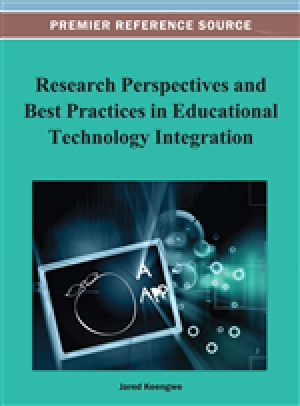
The integration of technology into classroom instruction is an oft-mentioned topic in modern pedagogical discussions. This collection of essays enters into the fray very broadly, by postulating productive ways of integrating various technologies into a wide variety of educational settings, covering an incredibly diverse set of subjects. Despite the dizzying variety inherent to this collection, there are two primary areas in which this volume is helpful to those interested in teaching theology or religion: First, for individual instructors intent on enhancing student learning, this volumes offers an overview of technologies instructors are using successfully, as well as effective summaries of educational theory justifying their approach to technology integration. Second, for departments or department chairs interested in broadening the use of technology within their course offerings, this volume includes many essays discussing methods with which teachers can recognize relevant technologies and their usefulness in the classroom. Several important and foundational principles about the integration of technology into classroom instruction undergird each chapter. Most foundationally, integrating technology into the classroom for the sake of integrating technology is over and over again shown to be ineffective (see esp. 45-46). There is a pernicious assumption in many sectors that classrooms need technology to be effective. Several chapters in this volume offer a very important caution: Technology is a tool, which when used well can serve to help students engage in classroom content more readily and thereby to learn more effectively, but the mere use of any technology does not ensure student engagement or learning. Two other theoretical sections are of note: A helpful overview of several learning theories is provided (informal and incidental learning, relational mentoring, and situated learning) which provides a helpful framework for the integration of technology into a classroom (233-236). Chapter 15 also offers an interesting survey of TPACK (technological, pedagogical, and content knowledge) research-based course design. Though this particular chapter relates this theoretical model to math education, the model has many important implications for theological and religious education. In addition to theoretical contributions, several specific technological tools are discussed with a view to their productive use in the classroom. A few technologies deserve specific mention here: Anonymous student polling either through clickers or Poll Everywhere is offered as an effective tool to enhance student discussion (46-51). Productive use of social media in a classroom setting is discussed (8-11 and 217-228), and its implications for privacy are covered in chapter 16. The role of games in learning is also considered (11-14 and 178-191). The specific games discussed in this volume are not really relevant to theological education; however, readers may be able to draw connections between the book and the Reacting to the Past (RTTP) group. RTTP has a few games dealing with theological or religious material (see RTTP). Several articles are focused on training instructors to use technology effectively while engaged with teaching. The authors contend that successful integration of technology into educational institutions requires first, the establishment of a culture of innovation, then the modeling of effective technological use by administrators and supervisors, and finally continuing support for instructors seeking to integrate technology into their classroom through both ongoing technological education and mentoring. In sum, Keengwe’s Research Perspectives is an all too broad entry into this complicated but important topic. It offers a good, but brief, survey of the theoretical foundation for technological integration, but the specific technologies mentioned, and the training models presented, seem like a preliminary attempt at integration rather than a proscriptive model to be adapted immediately in any classroom.
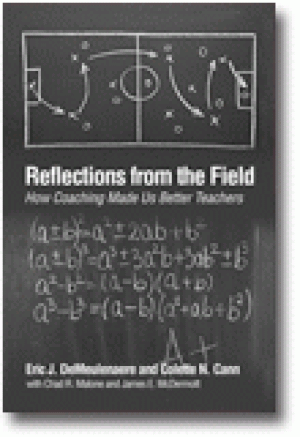
Who looks to middle or high school athletic coaches for innovations in pedagogy? Our stereotype of the coach in the classroom is of someone in a polo shirt with a whistle on a lanyard, teaching health class or low-tracked sections of history. In Reflections from the Field: How Coaching Made Us Better Teachers, Eric J. DeMeulenaere and Colette N. Cann, along with Chad R. Malone and James E. McDermott, undermine this image and offer glimpses of master coach-educators who are adept at discerning the unique needs of a team or class of students and crafting a coaching/teaching style that fosters not only athletic success and acquisition of knowledge, but also growth in students’ interpersonal skills and sense of their own potential. At the heart of the book are essays by each of the four named above, recounting how the narrators addressed difficult coaching situations and then applied what they had learned on the court or field to transform their classroom pedagogy. After each coaching essay, DeMeulenaere and Cann analyze the team and classroom dynamics in light of educational theory. They also supply an introduction and two chapters of concluding analysis and reflection. The athletes/students in question were all “at risk” or otherwise unpromising. McDermott’s principal had called one of his baseball players the “worst piece of ____[expletive deleted]” the principal had ever seen. Malone agreed to coach the Highland Park Lady Cougars basketball team after they had lost a game 90-6. Cann coached a volleyball team with no height, no strength, and no stars. And DeMeulenaere took on a fledgling girls’ soccer team whose members were more concerned about the boys watching practice from the bleachers than about training to win. The brilliant strategies crafted by each of these coaches go beyond inspirational speeches. McDermott persuaded his athletes to stop using foul language by making himself the “designated swearer”: when a player felt a need to cuss, he would raise his hand (one finger for English and two for Spanish) and McDermott would oblige, shouting at practice but speaking into his hand during actual games (13). This use of a humorous method to encourage professional demeanor complemented other techniques McDermott employed to convince players that they could be serious athletes -- and, in McDermott’s English classroom, serious students. But to use the word “techniques” to refer to what McDermott and the other three coaches did suggests a bag of pedagogical tricks. What the narrators offer are not miscellaneous tips or even best practices, but testimonies about how acting as servant-leaders on practice and playing fields and in the classroom transformed all involved. Teaching, for these coach-educators, is never paint-by-numbers, but requires capacity to read the situation, listen to those being coached or taught, and innovate in courageous ways. Although the word does not figure prominently in their narratives, coaching and teaching in this vein require extraordinary love. Reflections from the Field is relevant for theological educators. Despite the seeming disjuncture between the contexts described in this book and those of a religion classroom or theological seminary, readers will find analogies. They will also be prompted to think about ways that students -- and faculties -- could be strengthened by higher emphasis on collaboration and mutual support (the “team” aspect). Finally, the book will renew conviction that great teaching matters, and renew inspiration that it is more than worth all that it costs.
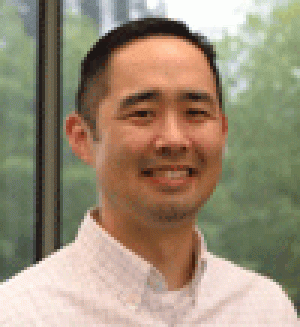
Roger S. Nam In my last post, I advocated for open source final exams, which focused on one’s ability to sort through the mass of information readily available on an iPhone. The response to that post was overwhelming, so I offer a follow-up conversation. Below I have paraphrased some of... Read more →
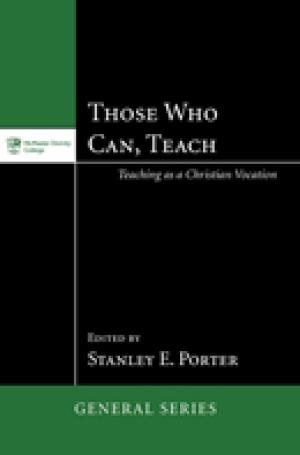
Most doctoral programs recognize the need to provide pedagogical training for their students, and yet, as Stanley Porter notes, rigorous and well-coordinated pedagogical formation is often still lacking (2). Those Who Can, Teach addresses many of the challenges faced by new teachers – particularly, though not exclusively, in seminaries and theological schools.Originating from two colloquies held at McMaster Divinity College, this is a rich volume filled with useful advice, concrete and practical examples, and compelling accounts of what theological education can be. The essays cover a wide range of topics, from developing a teaching philosophy to designing a lesson plan to teaching introductory Hebrew. As with most edited volumes, the distinctiveness of each author’s voice is heard without any attempt to offer a uniform message – and this is to the benefit to the book. Since the authors all teach at McMaster, the essays reflect the institution’s holistic emphasis on cognitive, formative, and practical learning goals. The book is especially strong in three areas. First, many of the essays offer helpful discussions about how to design courses and effective learning experiences. Chapters 2 through 7 consider course and lesson plan design from different angles and specializations. The best of the group is Lee Beach’s chapter, “Sculpting a Lesson.” This essay addresses many of the most frequent pitfalls for new (and not so new!) teachers and provides clear, practical advice for structuring an effective and manageable class session. Although the chapters on teaching Greek and Hebrew from Lois K. Fuller Dow and Paul Evans are obviously more narrowly focused, they offer not only useful accounts of how to teach introductory language courses, but also exemplary models of how to design courses with the vocational aspirations of one’s students in mind. The second strength of the volume is its concern for teachers. This concern runs through almost every essay, but it is the central topic of the concluding essays. As the subtitle of the book suggests, teaching here is seen as a vocation, as a task undertaken in response to God’s gracious love and for the sake of the Kingdom. The essays from Wendy Porter, Gordon Heath, and Phil Zylla propose strong visions for what conceiving of teaching as a vocation might look like, but in ways that open up a fruitful space of self-reflection for the reader. The third strength builds on the second: although Those Who Can, Teach covers topics applicable to almost anyone teaching theology or religion, it would be particularly beneficial to those who are teaching or who plan to teach in the setting of a seminary or theological school. The holistic emphasis throughout the volume on “Knowing,” “Being,” and “Doing” is essential for those who train future pastors and ministers in the church. Most of the example courses and materials in appendices are from courses designed with this audience in mind. I do have two reservations worth mentioning. First, several of the essays tend to over-emphasize the need to attend to different learning styles. The jury is still out on this, but recent research has questioned how decisive such differences are for student learning – even if adopting diverse instructional methods remains important. Second, in the opening essay Stanley Porter, after working through a number of teaching philosophies, ultimately strongly favors the model of the teacher as “colleague or collaborator” for almost any context (30-31). This choice is certainly defensible, but the essay fails to mention the risks of adopting this model for new (and younger) teachers (students may not immediately assume their expertise and competence). Many of the later essays prefer the model of the teacher as the creator of an effective learning environment (29, 58, 108, 181), which in my judgment offers a lower-risk and effective starting point for newer teachers. Obviously not all the essays in a book like this will be equally relevant to all readers. Overall, I would highly recommend this book to anyone who trains doctoral students in teaching – particularly doctoral students who may go on to teach in a seminary context. Individual essays would be very effective for teaching workshops for doctoral students as well.
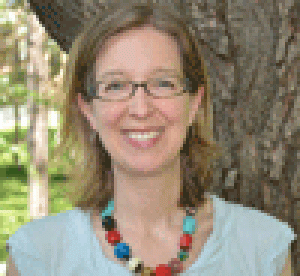
Kate Blanchard It’s a new year! Perhaps some of you, like me, have just spent a large chunk of time celebrating a holiday (or two) with your families of origin. And perhaps some of you, like me, have recently been pondering the distinct and all-encompassing weirdness that is being middle-aged...

My engineer son has a mantra: “Fix the problem.” As mantras go, it’s a pretty good one. Simple, memorable, intuitive, and to the point. The mantra refers to our tendency to go about addressing issues and problems by doing a...
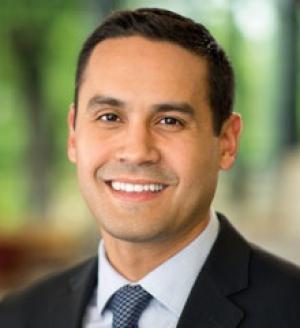
Eric D. Barreto I love the holiday season, but I think I loved it more as a student than as a teacher. The Christmas season was usually a clear barrier, a distinct break. Finals were done. There was no more work to do. The weeks of Christmas and New Year’s...
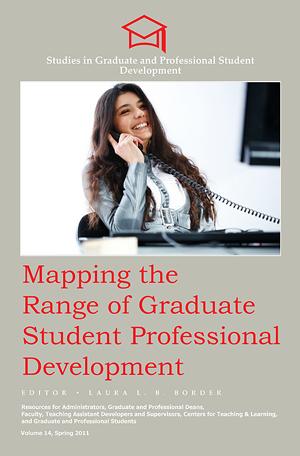
Graduates from religion and theology programs cannot expect to be hired to teaching positions (tenure-track or adjunct) without prior teaching experience, as the current job market demands that candidates gain significant experience and training prior to graduation. Graduate programs must therefore augment their academic offerings to students with an education that prepares them for successful teaching careers. To that end, a number of universities across diverse fields have adopted intentional Graduate Teaching Assistant (GTA) programs to prepare future faculty for a profession of teaching. The collection of essays in this volume examine multiple options for offering this kind of training, from institution-wide certification programs for teaching to single courses on pedagogy that can be embedded into existing degree requirements. Several chapters present case studies, providing a range of models for how an intentional GTA program might operate. Most of the programs reviewed are overseen by research universities with large student populations, such as the University of California-Berkeley. These programs are cross-curricular and focus exclusively on increasing teaching experience, and can be easily adapted for training teachers of theology and religion. This volume is most useful for those who are at least generally familiar with the rationale for training graduate students for teaching vocations and the value of it, and who are familiar (in knowledge if not in fact) with formal GTA programs. Administrators of GTA programs will find this a helpful reference volume as it provides information about how GTA programs compare with one another – including data on the kinds of training being offered (programs, certificates, and courses). Those who have the beginnings of a program and want to improve it will find examples of success (and failure) in schools of comparable size and student population, and find lists pertaining to the components of robust programs. Administrators of programs in schools operating with limited resources will want to read Chapter 8, “Leveraging Existing PFF (Preparing Future Faculty) Resources to Create a Certificate of University Teaching” (125-146), which describes the steps Duquesne University followed to develop a Certificate of Teaching program from meager resources. This is a data-rich volume, although the editors acknowledge the lack of discussion on teaching-related training regarding the ethics of teaching and professional behavior (170), as well as training to teach diversity (171). Also of note, the essays address professional development only insofar as it relates to teaching. They do not address training for supplementary skills needed to prepare future faculty of theology and religious studies, such as administration, community involvement, or advising/mentoring undergraduates. In addition to preparing graduate students to teach, forward-thinking Professional Development Programs should consider careers for their graduates beyond teaching. To that end, programs should also include training in how to apply degree-related skills to the nonprofit sector, as well as education-based, non-teaching careers (such as administration and editing). Administrators will want to keep an eye on future publications of the series Studies in Graduate and Professional Student Development to supplement this otherwise comprehensive and detailed volume.